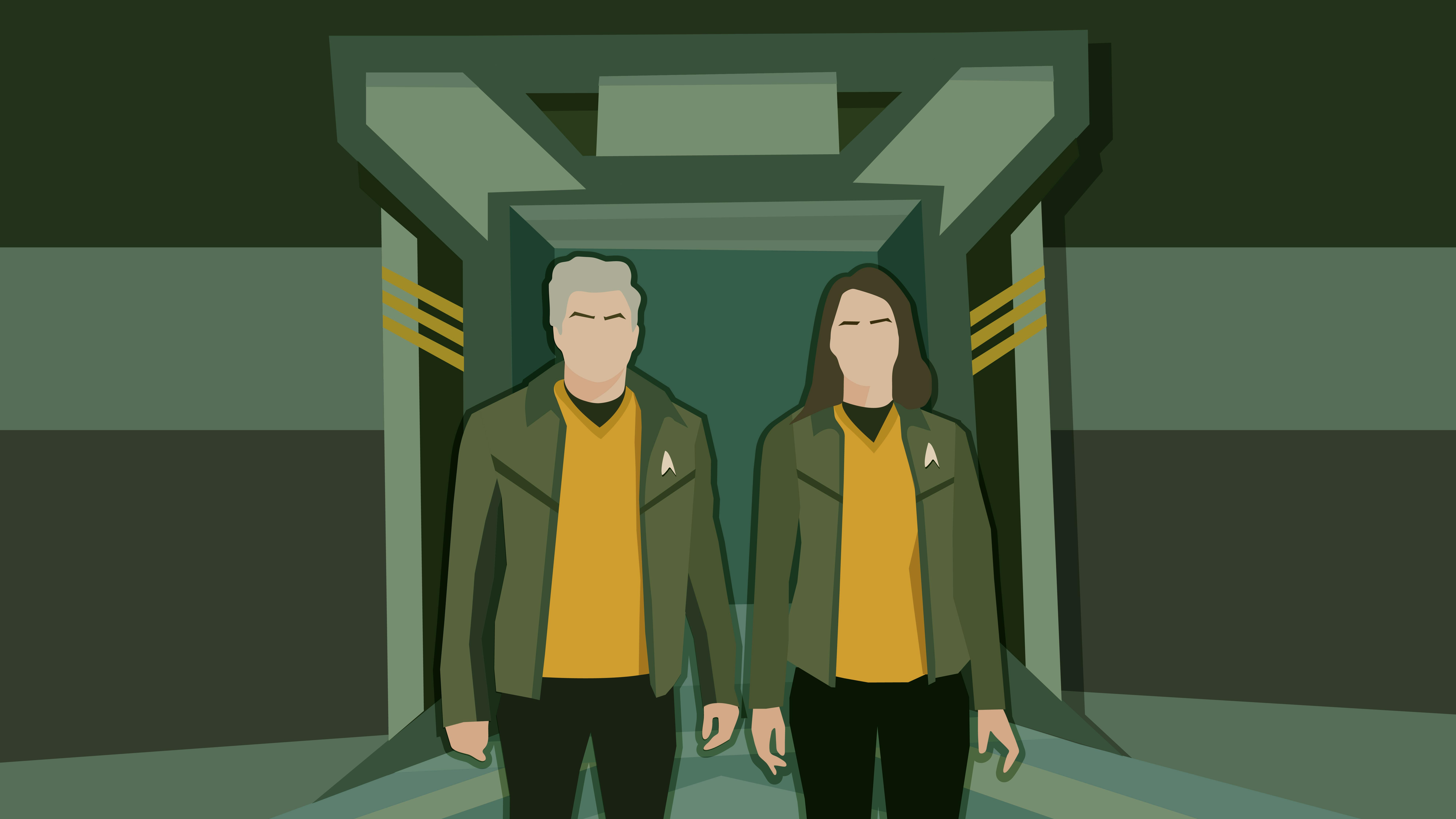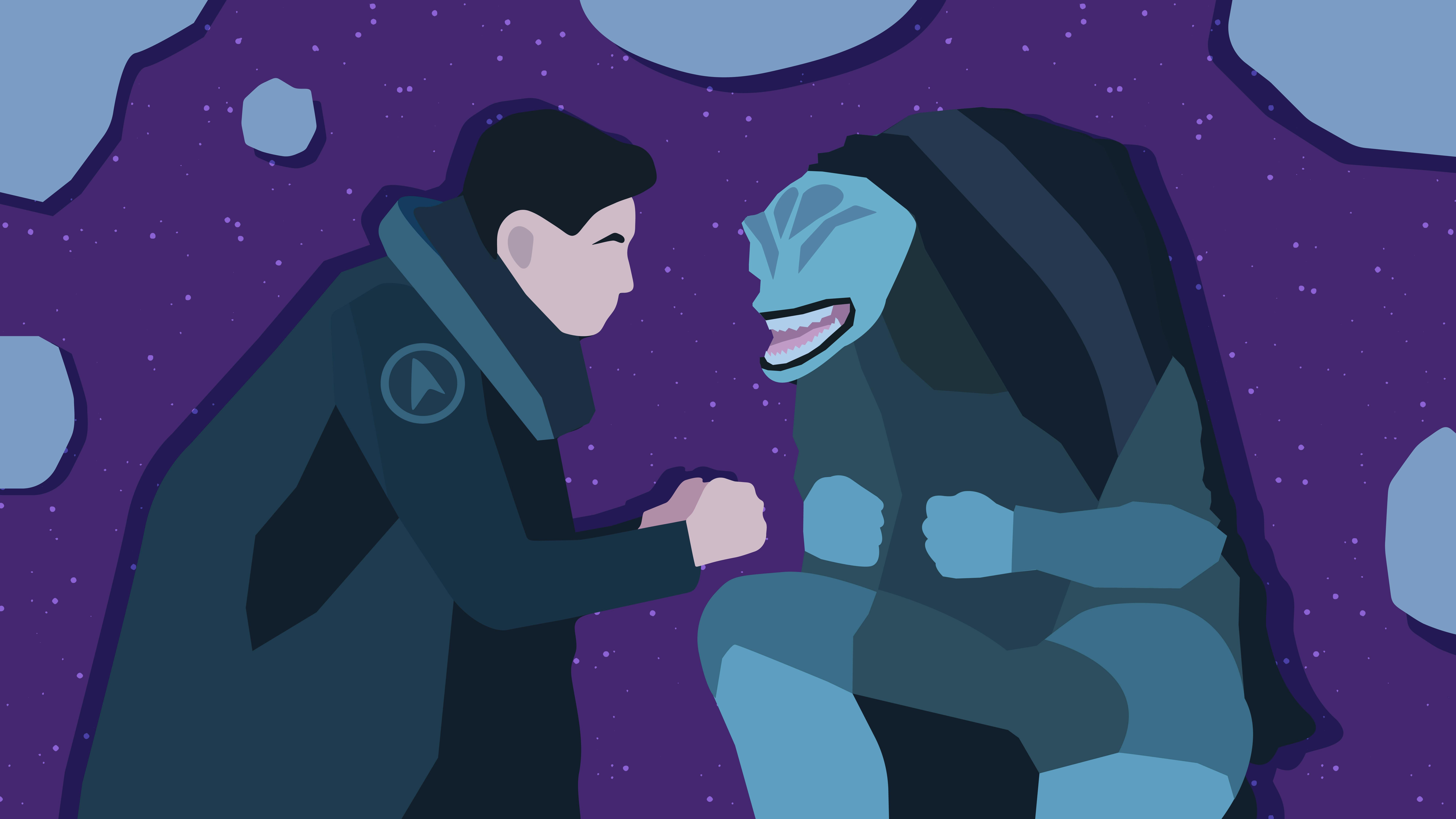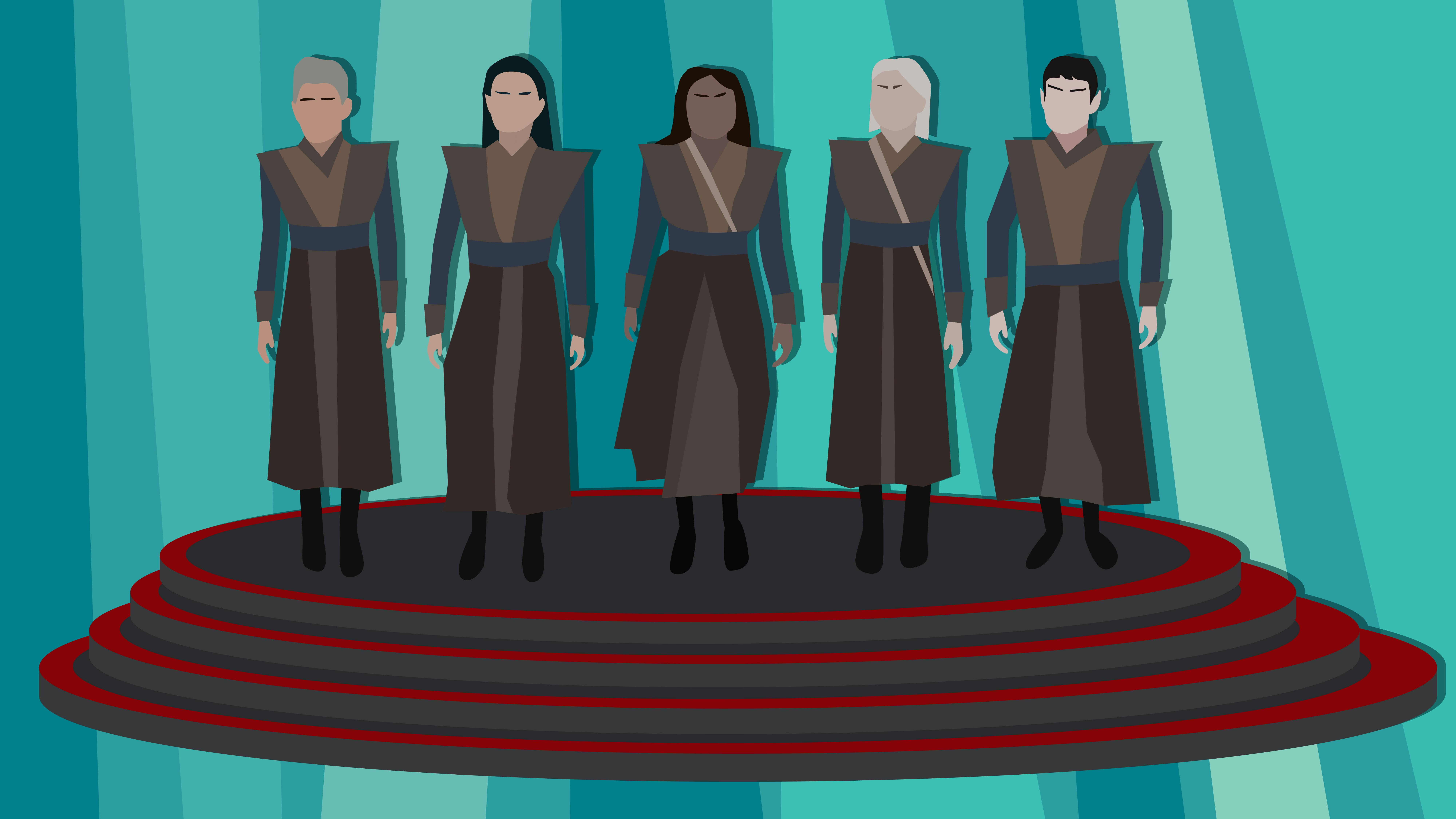Published Mar 19, 2025
'Cause and Effect': The Star Trek Episode That Stuck with Me
This TNG time loop stayed with a fan long after the Enterprise escaped.
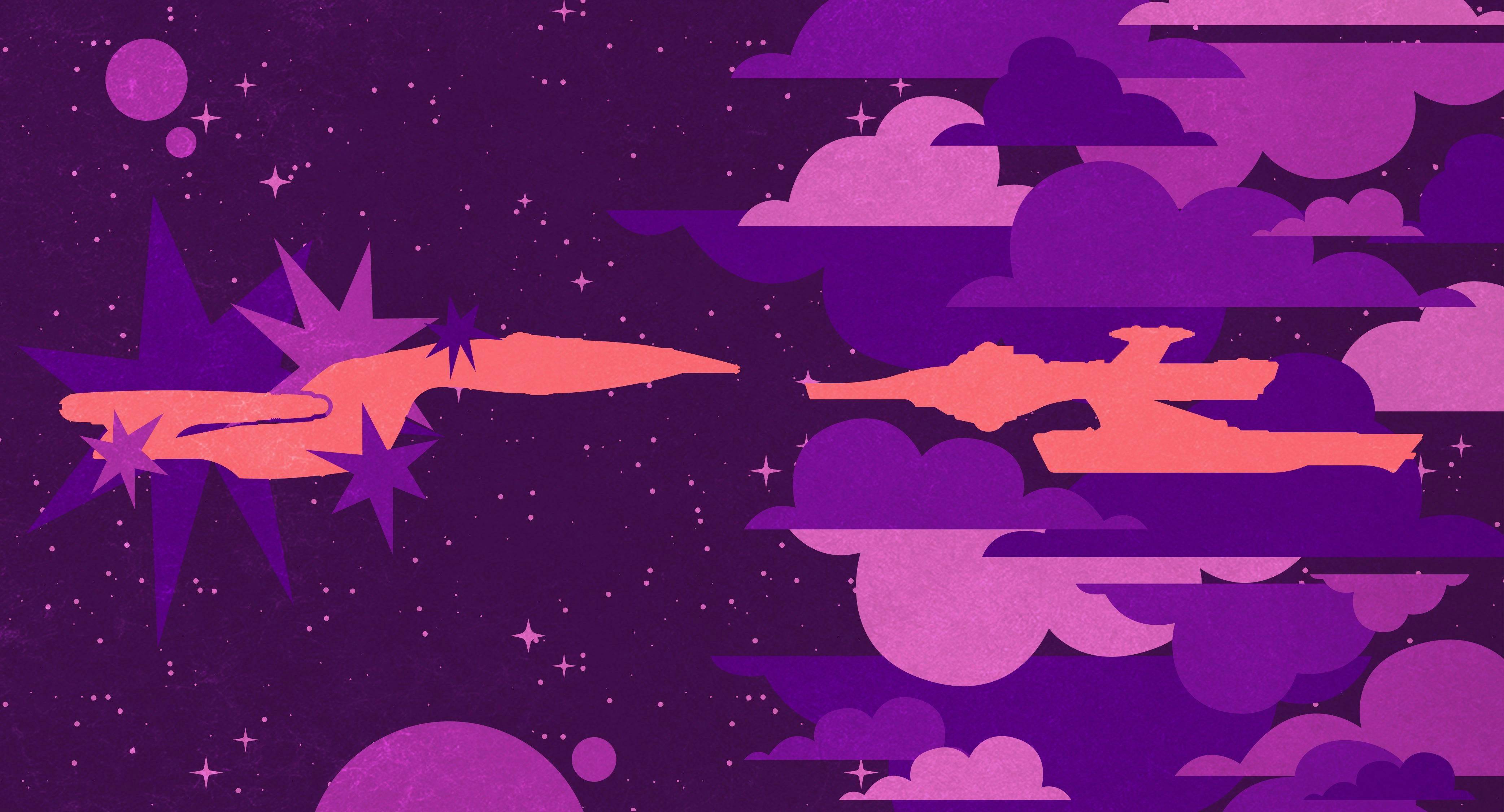
StarTrek.com
It's a Monday in the spring of 1992, and I'm 12 years old. I finished my homework, rushed downstairs to park myself on the couch in front of the TV, and flipped on .
THE ENTERPRISE IS EXPLODING. The bridge is in chaos; the starboard nacelle has taken a direct hit, casualty reports are coming in from all over the ship, a warp core breach is imminent, and Captain Picard is shouting, "All hands abandon ship! All hands abandon sh—"
BOOM. Theme.
What the hell just happened?
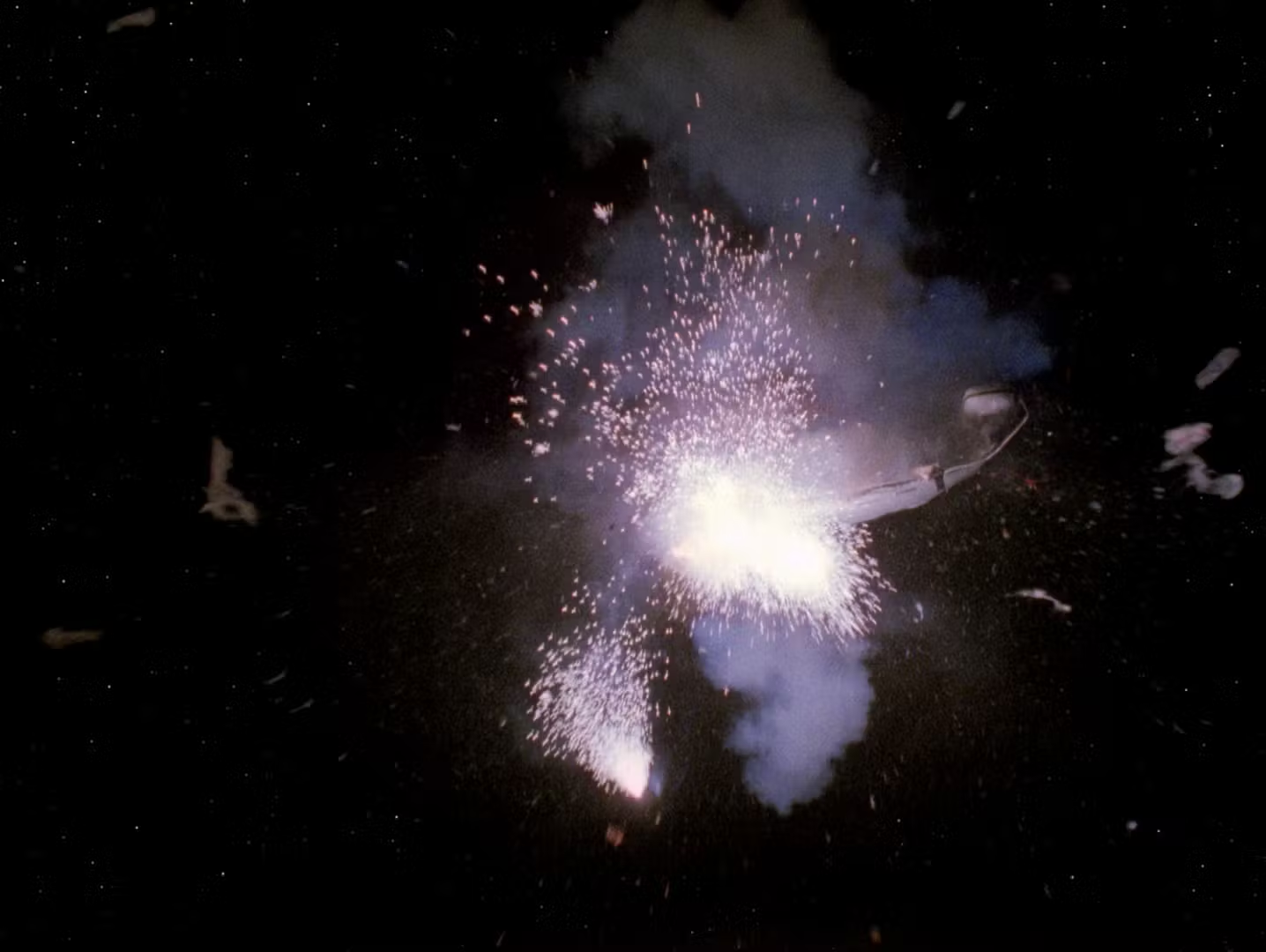
"Cause and Effect"
StarTrek.com
This is the frenetic opening of "," the 18th episode of the 5th season of Star Trek: The Next Generation. During the decades of seemingly endless syndication, I caught the odd episode here or there, but I don't recall ever seeing this one in its entirety again. And yet, that imagery of the shaking bridge being slowly engulfed by '90s-era CGI flames and the pieces of the Enterprise blasting away into empty space again and again stuck with me long into adulthood. There are few programs that I can vividly recall the experience of the very first watch. What was it about this particular episode that got to me?
The Enterprise being destroyed is the most in-media-res opening possible. Translated to "in the middle of things," what we've actually just witnessed is "the end of things," if this were a linear story. But it's not. After the credits, the episode picks up at a familiar poker game. We assume we are at beginning as we follow Dr. Crusher through a seemingly routine day that includes minor incidents of déjà vu and odd phenomenon until Worf reports they have encountered a temporal disturbance off the port bow.

"Cause and Effect"
StarTrek.com
I knew it, thinks 12-year-old me, fists clenched. Of course, the way out must be time travel! There's an alternative timeline or a paradox we must avoid to prevent the ship's inevitable destruction. Otherwise, there wouldn't be a show next week — and we know there is.
This is not actually a time travel episode, at least not for our protagonists. This is a time-loop, a repetition of the same events (usually over 24 hours) in which the characters are trapped. It is often referred to as the Groundhog Day trope after the movie of the same name, which coincidentally was also released in 1992, though this plot device does pre-date the film.
The oldest generally accepted example is The Defence of Duffer's Drift, written in 1904 by British Major-General Ernest Dunlop Swinton under the amusing pseudonym Lt. Backsight Forethought. In this story, the protagonist dreams over and over of the same battle, learning more about tactics each time until the mission is successful. In some incarnations of the time-loop, characters can change prior events at will, like in the 1965 Japanese novel The Girl Who Leapt Through Time. Some stories use the time-loop as a trap within which the characters are deliberately being punished and must right a wrong to escape. There is even, of course, an entire Christmas-themed subgenre.
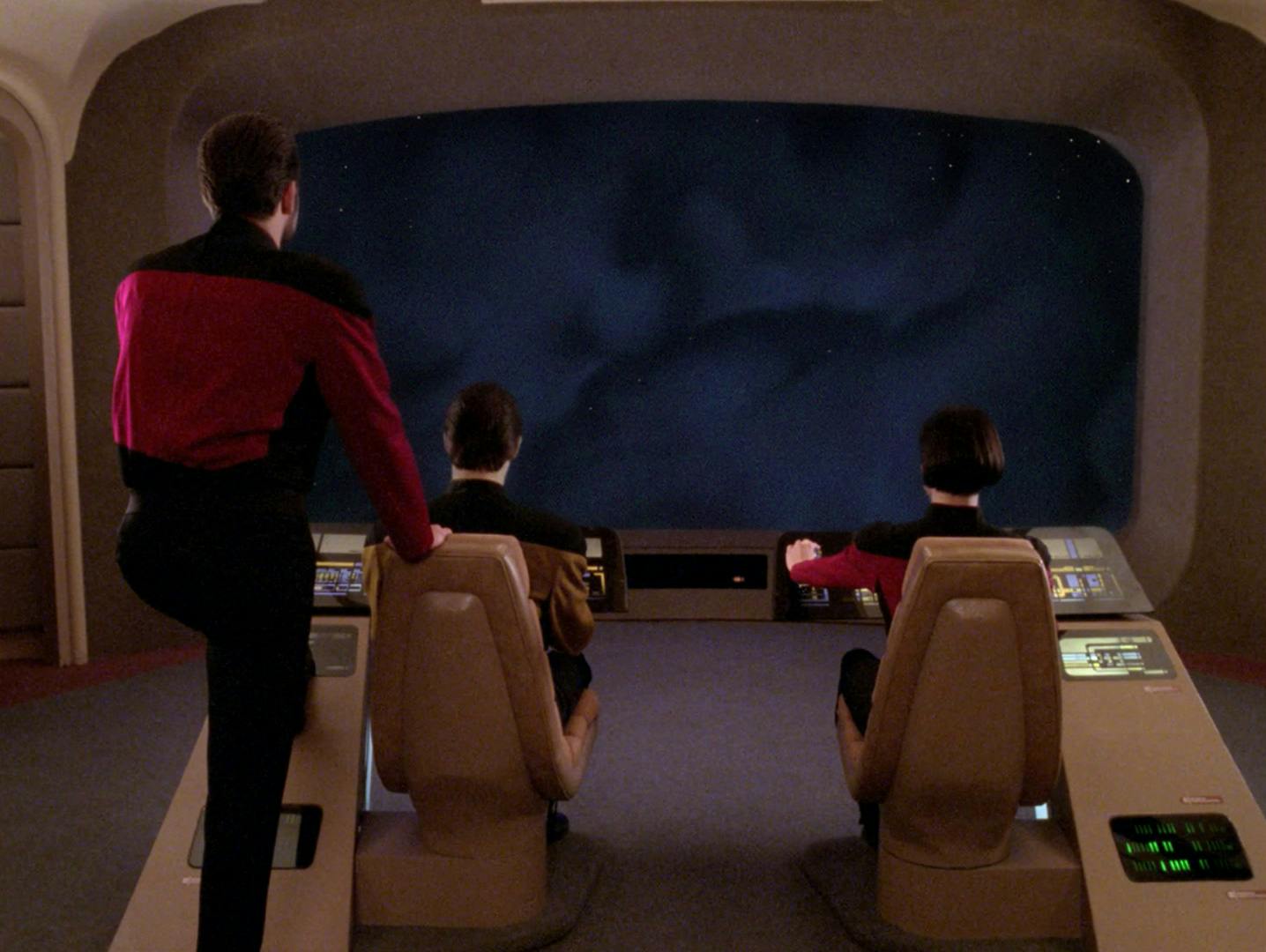
"Cause and Effect"
StarTrek.com
It is the storytelling that makes this episode so ingenious. You might think watching the same day unfold over and over would be unbearably repetitive. Fortunately, director Jonathan Frakes and writer Brandon Braga construct a puzzle of a plot that builds on the subtle changes in each repetition as the characters realize what the audience already knows and generates increasing suspense even as events repeat themselves.
The magic of this trope is that its conditions are flexible. While time-travel in the Star Trek universe has rules and prerequisites, time-loops can be magical in nature, divine intervention, a curse, necessary to "fix" someone or something, or require discovering the loop's trigger to escape it. The trope's namesake-movie famously addressed neither the cause nor nature of Phil Connor's never-ending Groundhog Day.
But this is science-fiction, so the explanation is half the fun! As the bridge officers report to deal with the temporal distortion, the tension was palpable for 12-year-old-me; I was about to see how the Enterprise is destroyed or how it is saved. However, the mood on the bridge is lo-key, as no one seems particularly concerned about this deceptively inconsequential sounding "highly localized distortion of the space-time continuum."
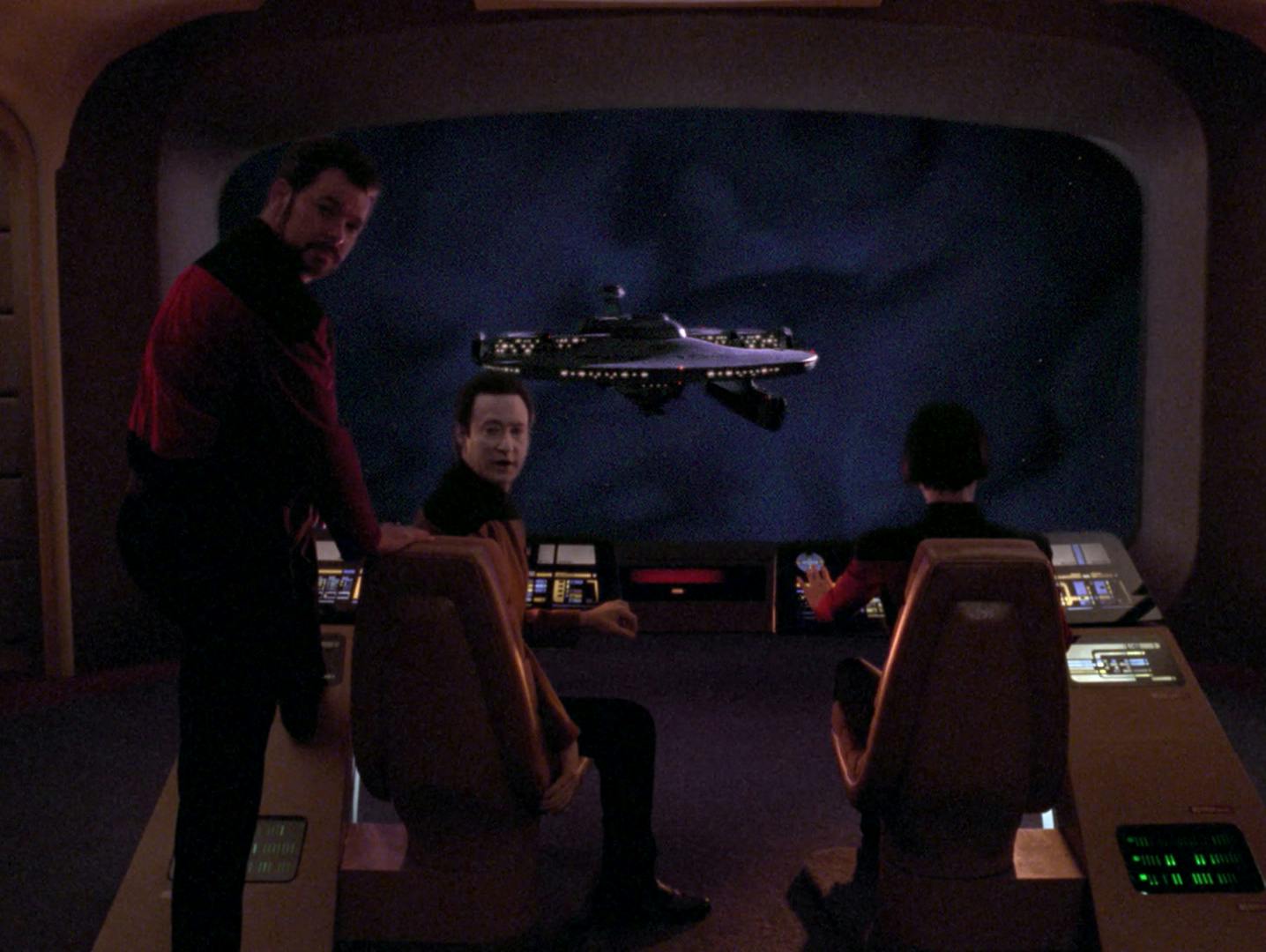
"Cause and Effect"
StarTrek.com
It just looks like a nondescript space cloud… then the power drops out. You can hear it in Troi's voice when she says, "We have to get out of here. Now." She is only that definitive when things are serious. And then it emerges — a ship from the midst of the distortion. They can't move, the helm won't respond. Shields are inoperative. No response to hails. Impact in 36 seconds. Riker suggests depressurizing the shuttle bay and Data suggests the tractor beam. They engage the tractor beam, but as the mystery ship is deflected, it strikes the nacelle.
In the ensuing chaos, Data's eerily calm monotone narrates each failure:
Initiating an emergency core shutdown!
Emergency shutdown is unsuccessful. We are losing antimatter containment.
We have to eject the core!
Ejection systems are offline. Core breach is imminent.
Data, "Cause and Effect"
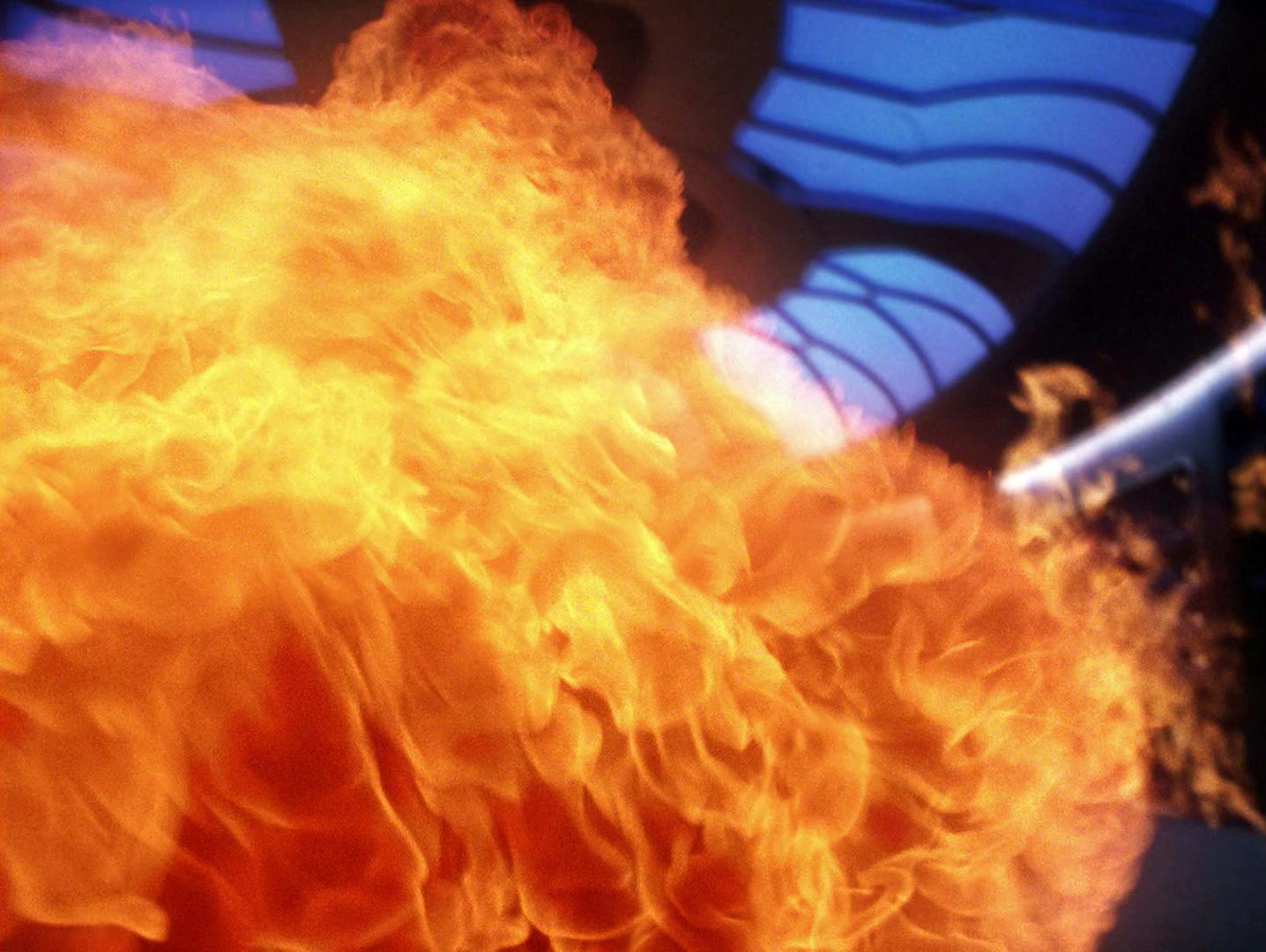
"Cause and Effect"
StarTrek.com
(I would like to pause here because 12-year-old-me wants this addressed. This is a Galaxy-class starship, the flagship of the Federation. Why is it that, while sailing through space all day long, the computer doesn't suffer a single malfunction until the very moment the ship faces what could be just a minor inconvenience, and then invariably the shields stop functioning, the helm doesn't respond, the warp engines can't be shut down, and for some reason the ejection system is offline, and now we are facing death?)
At this point in my re-watch, I distinctly remembered what disturbed me so very much about this scene. It was the sound. As the inertial dampeners fail and the Enterprise careens out of control in space, it emits a noise — a terrible groan that could only come from a 640-meter long, 460-meter wide tritanium-hulled starship whose spinning bulk is stressed past maximum tolerances as its warp core self-destructs. If a machine could scream, this is what it would sound like.
Yes, I know that in space, no one can hear anything scream, not even a machine.
The Enterprise explodes, the screen goes dark, and we return to our poker game to do it all over again.
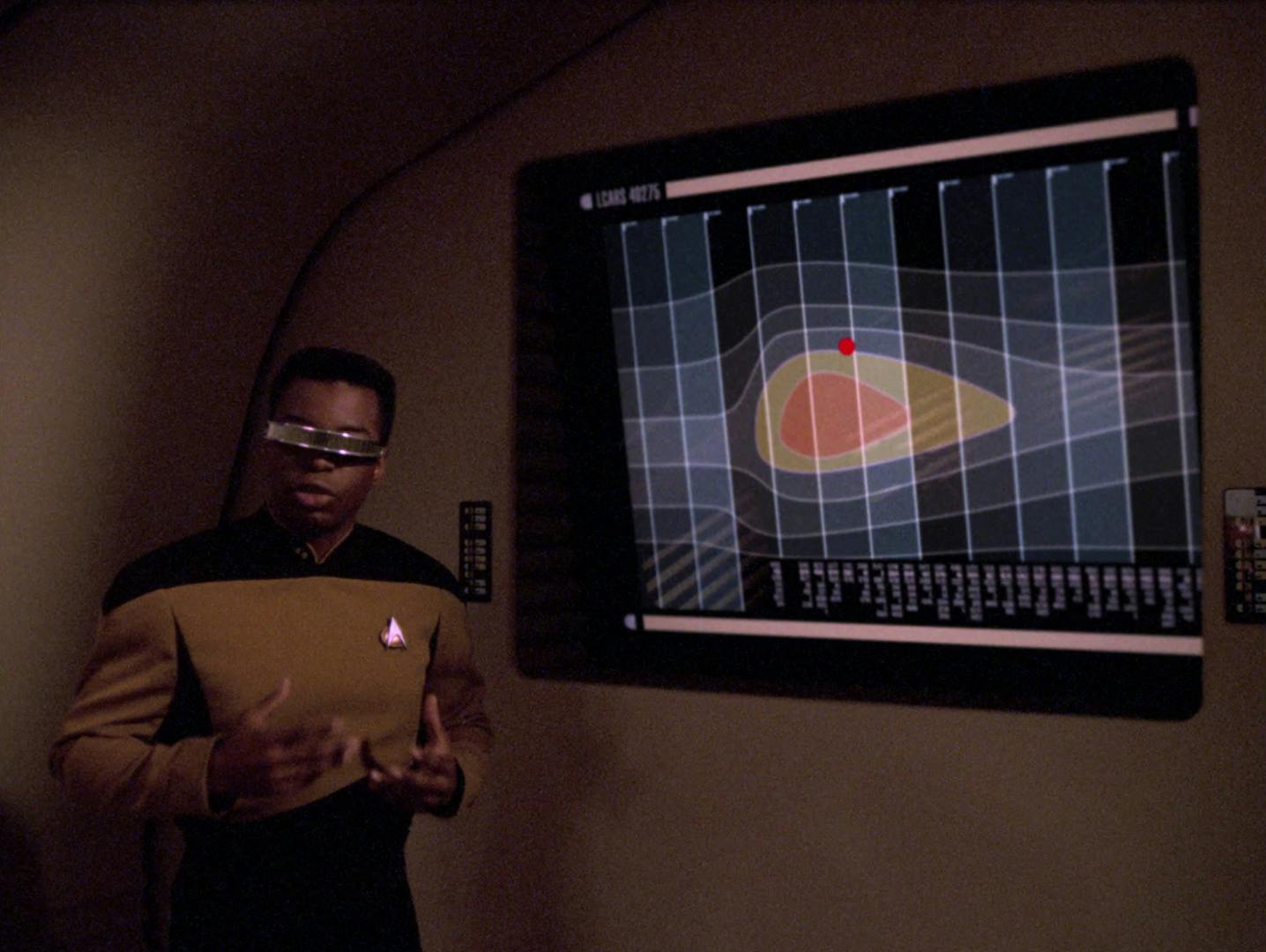
"Cause and Effect"
StarTrek.com
What the temporal disturbance does for our time-loop is ground the experience in spacetime principles that ensure when our characters relive the day, they have no knowledge of the day that already occurred. It is a causality-loop, where the event resets time itself. It makes that moment in the Observation Lounge briefing when Riker asks if they could have had this same conversation a dozen times and Geordi confirms, "We could have been trapped here for hours, days, maybe years," so disconcerting.
When the crew does manage to breach the causality-loop with that vital information needed to avoid the collision, we don't have a sitcom-like reset. We were never at the beginning of the story; in fact, the Enterprise has been missing for nearly 18 days. The U.S.S. Bozeman, captained by Frasier himself, has unfortunately gotten the worst of the temporal distortion. Believed lost in 2278, it has traveled 90 years in that same 18 days.
In those moments just before the Enterprise was destroyed, I watched in terror as every option was stripped away until there was but one decision to be made, and the wrong call, even if it seemed right, would doom the ship for eternity. To be trapped forever, reliving the same choice without knowing, seemed more horror than science fiction.
The elements that come together in this episode — ingenious use of the plot device, well-crafted storytelling, and smart directing — coalesce with just the right effects and acting skill to deliver an unnerving, dark, though ultimately triumphant experience.

